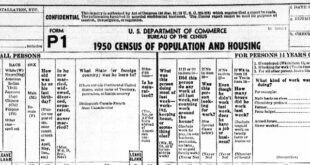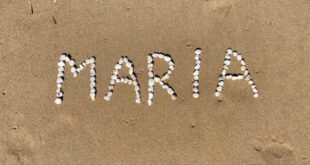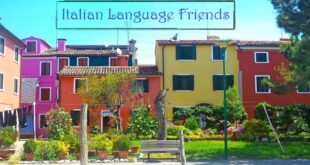Last month, we discussed on-line family trees, and some of the pros and cons. The major pro is that when you upload your tree, the on-line sites (familysearch and ancestry) check your tree for matches with other trees already in their web sites.
Keep in mind a couple of things when working with these two web sites. Familysearch is limited to the data that they have already microfilmed, and are now in the process of making those billions of images available on-line. Information is completely free due to being funded through the Mormon Church, who created the web site and operates it. Ancestry has a lot more data than familysearch but they are a for-profit company and charge a monthly or annual fee for access to the data and images. There is a lot of overlapping data, and a lot that doesn’t overlap, so it’s important to check both sites if at all possible.
Keep in mind a couple of things when working with these two web sites. First of all, they are in competition with each other, in a way. Familysearch is the web site of the LDS (Mormon) church. It is completely free to anyone who registers with the site. They will never push the Mormon religion using e-mails or any other form of recruitment. The web site is entirely funded by tithing Mormon Church members (which means they give 10 percent of their gross pay to the church). The data on the site is extracted from the microfilms they have accumulated over decades. Meanwhile, ancestry.com has a lot of the same data, which they paid to acquire. A lot of that data is now available for free at familysearch and ancestry has broken away from the LDS Church due to the effect this is having on their bottom line. Ancestry has a lot of data that is not available on familysearch, too. Let’s just summarize by saying that these two sites are NOT going to work together by checking your familysearch tree in ancestry, or vice versa.
Ancestry has advertised quite heavily about the “leaf.” You upload your tree and you look at the person’s record and it says there are four leaves. The leaf is a source document that should be looked at for that person.
Ancestry uses the system to bring up data it possesses that looks like a fit for your tree. It keeps track of which leaves you have looked at, and if you decide the leaf has nothing to do with Grandpa, you can “ignore” the leaf and it won’t come up again. As Ancestry looks at your tree, they use all the connections in the tree to decide which documents fit and which do not. And the good news is that it doesn’t look at the individual in isolation. For example, your grandpa’s family consists of husband Vito Geraci, wife Maria, children Matteo, Giorgio, Anna, Marianna, and Francesco. When Ancestry finds this family in your tree, connected together by relationship, it looks at the records it has to find any member of the family AND the entire family as a unit. So when it finds a census records from 1920, of Vito, Mary, Matteo, George, Anna, Mary Ann, and Frank, it determines that there are no other families in America that look anything like this, and that the first names are similar enough to their Italian first names you submitted in the tree. So every member of the family gets a leaf, pointing to the 1920 census. When you click on the leaf, the 1920 census record is shown, and you click the link to the census page itself. You can then connect that document to the family as a source, or you can choose to print or save it.
Ancestry will also find the 1930 census record and review it. Seems that Anna and George are missing. Ancestry has no way to know that Anna married and moved downstairs with her husband, and now has his surname. It also cannot tell that George died of TB in 1922. But it sees a census for Vito, Mary, Matteo, Mary Ann and Frank and decides that it is close enough to be match. It may use other data contained in the census like the ages of each family member, or the birthplaces. Vito and Maria/Mary and Matteo were born in Italy, and the rest in Illinois. Anything you put in the family tree that can help Ancestry confirm that their document matches with your relative will be used. If you know almost nothing about Vito and you just enter Vito Geraci, with no age or birthplace, Ancestry might not try to match up every Vito Geraci record with your grandpa because there will be too many matches. You would be completely covered in leaves, which on a nice Fall day would be fun, but as a genealogist you wouldn’t have time to examine each leaf.
By 1940, our family has scattered. Vito died. Mary is a widow living at the same house. Matteo married and moved down the street. Mary Ann married and moved to Colorado. Frank is still at home to work and support his mother. Now the family is much smaller than what your tree shows. The census record may still try to match up Mary and Frank as a family unit, but there is a much bigger chance that there are many other Mary Geraci’s with a son named Frank. If there are too many matches, Ancestry may choose to not create a leaf for that match. But if you have the death and marriage dates recorded in your tree, Ancestry can use that data to decide that this family unit is complete as is.
There are other records besides census records that can be a leaf. Ancestry tries to match up records with your tree based on birth date, birthplace, marriage place and date, death date and location. If the vital records are available for those locations, it can find these records as leaves. It may find other records you didn’t think of, such as the World War I draft registration cards for Matteo and George. Ancestry can sometimes be too forgiving, and try to link up to things that don’t make sense. It found a series of leaves on a Fuller family that has been in Chicago since the 1870s….in English Parish Registers! Yes they have the same names, but the dates are off and my Fullers are different than their British cousins!
But it comes up with records you don’t even know exist! If you’re new to genealogy, you learn what types of records are available with little formal training.
By the way, I just found out that the leaf system works on both the main Ancestry web site, and the iPhone app! If your tree is uploaded to Ancestry.com, it will load into your phone and show you the leaves there. Click the leaf and you can see the document (albeit that it’s hard to zoom in with the phone screen). Give it a try and write to me at italianroots@comcast.net if you find something you didn’t expect.
If you have any questions, send me an e-mail at italianroots@comcast.net and please put “Fra Noi” in the subject line. Have fun!
 Fra Noi Embrace Your Inner Italian
Fra Noi Embrace Your Inner Italian







Dear Dan,
Complimenti on your work with Italian genealogy. I want to alert you to our new film documentary, “The Secret Jews of Calabria.” It is now available for purchase and review. You can find out more information at my website: http://www.rabbibarbara.com and click on “movie.” Also I’ve had a new book come out as well … The Cat That Ate the Cannoli – Tales of the Hidden Jews of Southern Italy,” Let me know if we can send you review copies. B’shalom, Rabbi Barbara Aiello